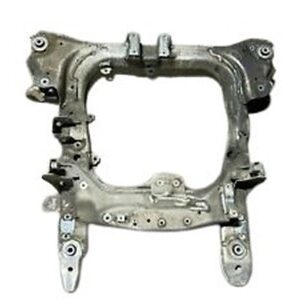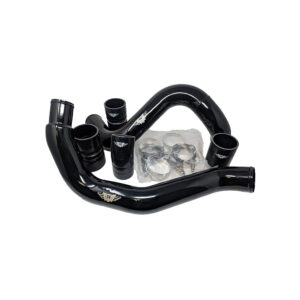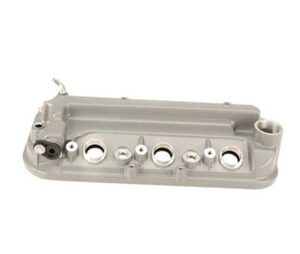Clutch Master Cylinder
The Clutch Master Cylinder, an integral component of hydraulic clutch systems, plays a pivotal role in transmitting force seamlessly from the clutch pedal to the slave cylinder.
Engineered with precision, this hydraulic marvel operates on a straightforward principle, ensuring optimal performance in every engagement.
The master cylinder, connected to the clutch pedal through a meticulously designed lever mechanism, exemplifies efficiency and reliability.
Crafted for compatibility with a variety of brands, our Clutch Master Cylinder stands as a testament to quality and durability.
Its robust design ensures smooth and responsive clutch operation, enhancing the overall driving experience.
Trust in the seamless functionality of our Clutch Master Cylinder, a key player in hydraulic clutch systems, designed to meet the highest standards of performance and longevity.
Elevate your driving experience with confidence, as our product guarantees precision and reliability across diverse automotive brands.
$150.00
CompareClutch Master Cylinder
The clutch master cylinder is a critical component in a vehicle’s manual transmission system, responsible for converting the mechanical force applied by the driver’s foot into hydraulic pressure to engage and disengage the clutch. This hydraulic component ensures the smooth operation of the clutch system, facilitating gear shifts and overall vehicle control. Typically mounted on the vehicle’s firewall, near the clutch pedal, the clutch master cylinder plays a key role in the transmission of power from the engine to the wheels.
Material and Construction
Clutch master cylinders are designed using materials that can withstand high pressure and resist wear over time. The primary materials used include:
- Aluminum: Most modern clutch master cylinders are made from lightweight aluminum, which offers excellent resistance to corrosion and heat. Aluminum is a preferred material because of its strength-to-weight ratio, making it durable without adding unnecessary weight to the vehicle.
- Steel: Some clutch master cylinders use steel for its durability and strength, particularly in heavy-duty or performance applications. Steel components are often coated or treated to resist rust and corrosion.
- Plastic/Polymer Composites: In some cases, high-strength plastics or polymer composites are used for parts of the clutch master cylinder. These materials are lightweight and resistant to corrosion, making them suitable for less demanding applications.
- Rubber Seals: The internal seals, typically made from high-quality rubber or synthetic materials, ensure the hydraulic fluid does not leak and maintains the required pressure within the system.
Design and Functionality
The clutch master cylinder is designed to efficiently transmit force and ensure reliable clutch operation. Its key functions and design elements include:
- Hydraulic Force Conversion: The clutch master cylinder converts the mechanical force from the clutch pedal into hydraulic pressure. When the driver depresses the clutch pedal, a piston inside the cylinder pushes hydraulic fluid through a line to the clutch slave cylinder, which then disengages the clutch.
- Reservoir: The clutch master cylinder is equipped with a small reservoir that holds the hydraulic fluid. This reservoir is typically transparent or semi-transparent to allow for easy monitoring of fluid levels. A cap with a built-in fluid level sensor may be included to alert the driver of low fluid levels.
- Piston and Cylinder Assembly: Inside the master cylinder, a piston moves within a cylindrical bore. This movement creates hydraulic pressure that is transmitted through the clutch fluid. The precision of this piston movement is crucial for accurate clutch operation and feel.
- Return Spring: A return spring inside the master cylinder helps to return the piston to its original position when the clutch pedal is released. This ensures the system is ready for the next use and helps maintain the proper pressure within the hydraulic lines.
- Bleeder Valve: Some clutch master cylinders are equipped with a bleeder valve that allows air to be expelled from the hydraulic system. Proper bleeding of the system is essential to ensure the clutch operates smoothly without sponginess or delay.
- Mounting Points: The master cylinder is securely mounted to the vehicle’s firewall using bolts or brackets. This mounting provides stability and ensures that the cylinder remains fixed during operation, even under high-pressure conditions.
Types of Clutch Master Cylinders
There are various types of clutch master cylinders, each tailored to different vehicle applications and performance requirements:
- Single Circuit Master Cylinder: This is the most common type, found in many passenger vehicles. It operates a single hydraulic line that goes directly to the clutch slave cylinder, providing a straightforward and efficient system for clutch engagement.
- Dual Circuit Master Cylinder: Some vehicles, especially those requiring more robust performance, use dual-circuit master cylinders. These provide a backup hydraulic circuit, ensuring that even if one circuit fails, the other can maintain clutch operation.
- High-Performance Master Cylinder: Designed for racing or high-performance vehicles, these master cylinders are built to withstand higher pressures and temperatures. They often feature larger bores and are constructed from advanced materials like billet aluminum to reduce weight and increase strength.
- Remote Reservoir Master Cylinder: In some applications, the reservoir is separate from the master cylinder and connected via a hose. This design allows for easier access to the reservoir for maintenance and can help in space-constrained engine bays.
Components and Features of Clutch Master Cylinders
The design of a clutch master cylinder typically includes several essential components that ensure its functionality:
- Push Rod: Connected to the clutch pedal, the push rod transmits the driver’s input force to the piston inside the master cylinder. The push rod is usually adjustable to fine-tune the pedal feel and engagement point.
- Piston: The piston moves within the cylinder bore to generate hydraulic pressure. It is usually made from metal and coated to reduce friction and wear.
- Cylinder Bore: The internal bore of the cylinder must be smooth and precisely machined to allow the piston to move without resistance, maintaining the integrity of the hydraulic system.
- Hydraulic Lines: These lines carry the hydraulic fluid from the master cylinder to the clutch slave cylinder. They must be made from high-pressure-resistant materials to prevent leaks and ensure consistent performance.
- Rubber Seals and O-rings: These components prevent hydraulic fluid from leaking out of the master cylinder. They are critical for maintaining the pressure within the system and ensuring reliable clutch operation.
- Reservoir Cap: The cap covers the fluid reservoir, preventing contamination and maintaining the hydraulic fluid’s integrity. Some caps may include sensors to monitor fluid levels.
Performance and Benefits
The clutch master cylinder offers several key performance benefits, making it an essential component of the vehicle’s manual transmission system:
- Smooth Clutch Engagement: By converting the mechanical input from the clutch pedal into hydraulic pressure, the master cylinder ensures smooth and consistent clutch engagement and disengagement, enhancing the vehicle’s driving experience.
- Reliable Operation: With its robust design and high-quality materials, the clutch master cylinder provides reliable operation over the vehicle’s lifetime, reducing the need for frequent maintenance or replacement.
- Improved Driver Control: The precision of the master cylinder’s hydraulic system allows for better control of the clutch, enabling drivers to perform smooth gear changes and maintain optimal engine performance.
- Enhanced Safety: A well-functioning clutch master cylinder ensures that the vehicle’s clutch system responds accurately to driver inputs, preventing unintentional clutch engagement or disengagement, which could lead to accidents.
- Customization and Adjustability: Many master cylinders offer adjustable push rods and other tuning features, allowing drivers to customize the clutch feel to their preference, which is especially valuable in performance and racing applications.
Applications and Use Cases
Clutch master cylinders are used in a wide range of vehicles, from everyday cars to high-performance sports cars, and even in some motorcycles and commercial vehicles:
- Passenger Vehicles: Most manual transmission cars come equipped with a clutch master cylinder to facilitate smooth gear shifts and enhance driving comfort.
- Sports and Performance Cars: High-performance vehicles often use upgraded master cylinders designed to handle increased pressure and provide a more responsive clutch feel, suitable for aggressive driving and racing conditions.
- Commercial Vehicles: Trucks and other commercial vehicles may use more robust master cylinders to handle the increased demands of heavier loads and frequent clutch use.
- Motorcycles: Some motorcycles, especially larger touring or sport bikes, use hydraulic clutch systems with a master cylinder to provide smooth and consistent clutch operation.
Conclusion
The clutch master cylinder is a vital component in the operation of manual transmission systems, converting mechanical input into hydraulic pressure to control the clutch’s engagement and disengagement. Constructed from materials like aluminum, steel, and high-strength composites, this component ensures reliable performance, smooth gear shifts, and enhanced driver control. Whether in everyday passenger cars or high-performance vehicles, the clutch master cylinder plays a crucial role in the driving experience, making it an indispensable part of automotive engineering.
Based on 0 reviews
Be the first to review “Clutch Master Cylinder” Cancel reply
Related products
-
Engine
Engine Cradle
0 out of 5(0)An engine cradle, also known as a “subframe,” stands as a vital structural cornerstone within the realm of unibody vehicles, the prevalent architecture in contemporary passenger vehicles.
This crucial component serves as a steadfast support system for the engine, transmission, and front suspension, ensuring optimal performance and structural integrity.
Often referred to as a rolling engine stand, the engine cradle seamlessly accommodates the mounting and maneuvering of engines, embodying a pivotal role in automotive maintenance and maneuverability.
Crafted with precision and durability, our engine cradle exemplifies engineering excellence, fostering stability and longevity.
Whether you’re navigating the urban landscape or tackling rugged terrains, our versatile engine cradle assures resilience and steadfast support, regardless of your vehicle’s make or model.
Elevate your driving experience with our reliable and meticulously designed engine cradle – an epitome of automotive innovation.
SKU: n/a -
Engine
Powerstroke Engines Turbo Air Products – DK Engine Parts (Intercooler Pipes)
0 out of 5(0)Introducing the Powerstroke Engines Turbo Air Products by DK Engine Parts, specifically the Intercooler Pipes, designed to elevate your vehicle’s performance with precision and reliability.
Crafted with meticulous attention to detail, these intercooler pipes seamlessly integrate into your turbocharged engine system, optimizing airflow for enhanced efficiency.
Constructed for Powerstroke Engines, these intercooler pipes play a pivotal role in maximizing the potential of your turbocharger.
Engineered with cutting-edge technology, our Turbo Air Products ensure a seamless connection between components, promoting a balanced flow and distribution of air for optimal engine turbo function.
DK Engine Parts’ commitment to quality shines through in these intercooler pipes, forming a vital link in your turbo kit. Whether you’re upgrading your existing system or fine-tuning your turbo car, these intercooler pipes deliver unparalleled performance and durability.
Elevate your driving experience with Powerstroke Engines Turbo Air Products – where power meets precision.
SKU: n/a -
Engine
Valve Cover
0 out of 5(0)The Valve Cover, also known as a rocker cover, stands as a crucial engine component, crafted from durable plastic or metal and securely bolted atop the cylinder head.
Its significance lies in the preservation of engine health and performance by effectively containing oil within the engine.
This integral part prevents oil leaks and ensures optimal functioning. Engineered for longevity and reliability, our valve covers are designed to meet the highest standards, catering to a wide range of vehicles, including LS models.
Each valve cover seamlessly integrates with the engine, forming a secure seal with the assistance of a high-quality valve cover gasket.
Enhance your engine’s longevity and performance with our premium valve covers a testament to precision engineering and durability.
Choose excellence for your vehicle, as our valve covers are crafted to exceed expectations, offering a perfect fit for various car models.
SKU: n/a -
Engine
Engine Cover
0 out of 5(0)In many modern four-stroke engines, the cylinder head cover houses the upper actuation elements of the engine control unit as well as the valves in the crankcase ventilation with all its peripheral devices. Additionally, it protects the engine from dirt or other foreign objects
*WE HAVE ALL COLOURS AND VARIANTS IN ALL BRANDS*
*TERMS AND CONDITION APPLY*
SKU: n/a -
Engine
Engine Oil Pan
0 out of 5(0)The engine oil pan is a vital component seamlessly integrated into your vehicle’s engine system.
Precision-engineered and crafted, it securely attaches to the engine’s underside using robust bolts, serving as the primary reservoir for oil.
As the heartbeat of your engine, this oil pan facilitates the efficient circulation of oil, ensuring optimal lubrication, cleanliness, and cooling of crucial moving parts.
During an oil change, the oil pan plays a pivotal role in the extraction and replenishment of engine oil, promoting longevity and peak performance.
Designed for compatibility with a variety of engine types, our oil pan exemplifies durability and reliability across all brands.
Engineered to exact standards, it enhances overall engine efficiency by reducing friction between components, mitigating heat generation, and promoting a cleaner, cooler engine environment.
Trust in the quality and versatility of our oil pan, a cornerstone of engine maintenance, whether you prefer conventional or synthetic oil.
Elevate your driving experience with a product designed to exceed expectations.
SKU: n/a









There are no reviews yet.